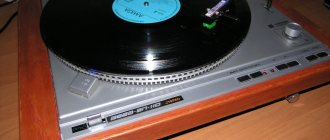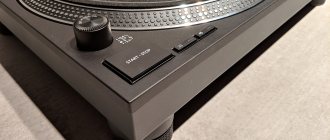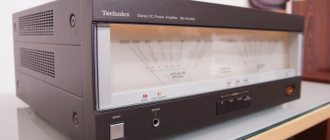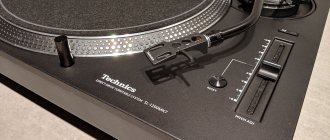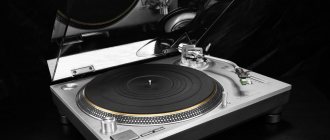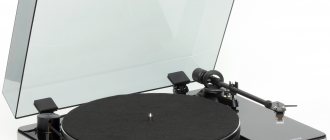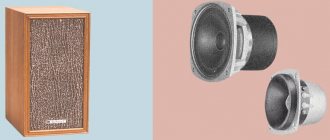History of loudspeakers
The USSR Council of Ministers, having analyzed Western trends and the state of the domestic market, came to the conclusion that large reference speakers already exist, but with small, high-quality ones, things were difficult. And so, by the mid-80s, new Estonia 35AC-021 speakers appeared. The engineers of this acoustics, unlike the developers of Electronics, did not copy any specific model, but decided to make something of their own. The new speakers were a three-way design with a cellular woofer, and dome midrange and tweeter speakers. They had a form factor - large shelves. Acoustic design - FI. Despite its modest size, Estonia 35AC-021 had a fantastic power of -130 W RMS (250 W musical). Their main problem was the meager sensitivity (85 dB) and a rather crooked impedance graph. Because of this, speakers were a difficult load for almost any amplifier. The acoustics were equipped with a high-class block music center. The amplifier included in the kit had a rated power of 35 W and did not reveal their capabilities. The speakers were produced in Estonia and after the collapse of the USSR, the Baltic company AUDES, for a long time, produced acoustics built on these speakers. In Russia, in the 90s, similar speakers were produced called Soyuz 130 AS 002 (3-way) and Soyuz 100 AS 003 (2-way).
By the end of the 1980s, the USSR even produced electrostatic acoustics - 35 ASDS and 100 ASA. The first of them went into series; it had a 3-way design, where flat electrostatic panels were responsible for the midrange and high-frequency ranges, and the usual electrodynamic head 75 HDN (the same as in the S-90 series) was responsible for the low frequencies, the quality of which is clearly did not reach the level of the MF-HF link of the system. There were also speakers with EMOS - Radiotechnica S-70, which were made on the basis of the same S-90.
I would like to mention another Soviet-era acoustic system developed by VNIIRPA, this is the Corvette 75 AS 001 (Kliver 150 AS 009). They were considered the most powerful (maximum short-term power, which was 300W!) household speakers in the USSR. The acoustics were also distinguished by a relatively high sensitivity of about 91 dB. LF: diameter - 30cm, diffuser reinforced with sheep's wool paper, cast ventilated basket, solid large ferrite magnet. Midrange: on a rigid textile suspension, magnetic system with a brass core. True, the HF (lavsan dome) speakers were inherited from the speakers from the S-90 series, which did not reach the quality of the entire system. But when introducing it into production, directly at the plant, in order not to complicate their lives, the local management decided to simplify the system. For example: we used “regular” paper pulp without sheep’s wool; They couldn’t make solid magnets, so they glued them together from pieces, removed the brass core from the midrange, simplified the filters, and much more.
No matter how the USSR tried to chase the West, the assortment was still poor. For example, we have never developed coaxial and horn speakers. And those that were produced were impossible to buy; they often went to “friends” before even reaching the store counter.
How I bought an old Japanese junk 2: Technics SU-7
Remember the story about my fossilized 1983 Technics Jacket System stereo? There I talked about how I decided to assemble a complete set, but so far I have not been able to find the most desired component - the top-end amplifier of the series with arrows.
You buy something with your heart - it’s not that I really needed it, but once I saw it, I couldn’t sleep peacefully and all this time I didn’t stop searching for a single day. Three years later, luck smiled at me - an almost perfect device was found in Germany. And now I will try to tell you what it is - the Technics SU-7 compact amplifier from the distant 80s, and how relevant it is today, in the 21st century.
A little history
The eighties gave birth to a new concept of compact audio components, made possible only by compact vinyl players with the so-called linear tracking system, or more simply, with tangential tonearms. And this opportunity to make compact turntables led manufacturers to the idea of creating components corresponding to them.
This is how the Technics Jacket System series appeared - compact music centers with a panel width of 315 mm, exactly the size of a vinyl disc cover. All components could be connected either wirelessly via a special bus or using standard RCA cables. Thanks to the modular system, customers were offered a choice of several different modules from which they could create the best option.
In those years, the legendary Technics SE-A1 amplifiers with arrows covering the entire façade were just coming out, and in this compact system they also made their own amplifier with a similar design with arrow indicators covering the entire front panel. Today this thing is very rare for the reason that it was produced only one year - 1983.
Outside
For all its external beauty, this is not the most comfortable amplifier in terms of ergonomics - on the facade it has three claustrophobic slide controls for tone and balance, and they are definitely less convenient than traditional rotary controls. But four buttons for switching inputs and a large slider volume control are good.
On the left, under the power button, you can see a 6.3 mm jack for connecting headphones and a button for the proprietary Super bass loudspeaker system.
And another fun fact: this is one of the first amplifiers to have the inscription CD on the AUX input, because it was in 1983 that the first CD players began to be mass-produced. At the same time, there is a built-in MM phono stage for the turntable.
The large “screen” with arrows looks amazing, of course. It is very well made and even today is perceived as an absolutely uncompromising design element. Moreover, it is perfectly readable during the day, thanks to the fluorescent orange hands, and at night you can’t take your eyes off it at all - the scales here are illuminated as if from the inside, creating maximum contrast illumination.
It’s interesting how the switching of inputs works in it - AUX, Tuner and Phono replace each other when switching, but when you press the Tape button, the active input is simply blocked and two LEDs on the panel light up - orange Tape and green active input, from which you can record if necessary . It turns out to be a kind of imitation of a through channel - this way you can monitor the tape recording from any of the three inputs.
On the back you can see five pairs of NOT gold-plated RCA connectors - four input and one pair of output for recording to the deck.
The connectors for connecting acoustics here have a rotating mechanism, they are completely inconvenient, they only accept a “bare” cable, and it should not be very thick - a modern 2x2.5mm one fits in with great difficulty. Of course, there can be no talk of any bananas or spatulas.
But here you can find an additional socket, to which an adjacent component, such as a tuner or equalizer, can be conveniently connected.
Inside
Compared to the SU-5, this is a much more serious amplifier. As you can see, its body is twice as tall, and this is not only to place arrows on the facade - the inside of this body is stuffed to capacity.
Under the cover you can find a fairly large transformer and a modular design with several separate boards and a fairly large heatsink.
This compact beast consumes 400 watts of power, delivering only 50 watts per channel to the speakers.
Sound
I use this amp with vintage Technics SB-F2 MK2 compact bookshelf speakers, and as a source I use my Macbook Pro connected through a compact Schiit Modi 3 DAC. The player is Roon and the native Tidal application.
So, in this ecosystem, the SU-7 showed a significant increase in quality compared to its predecessor SU-5, which had rather average sound capabilities. In general, the handwriting of the “seven” can be described as more neutral, but slightly on the warm side.
First of all, we can note the increased holographicity, on my table the stage has noticeably increased in depth, the instruments began to be drawn better, the dynamics have grown and, in general, the overall feeling of sound transparency has become a step higher.
I also really liked the sound from the built-in headphone output - although it cannot fully reveal the capabilities of the Audeze LCD-2, overall it sounds very, very pleasant, with good dynamics and volume at the bottom.
But this is all in the conditions of working with old Technics speakers, so I still have to find out how it compares with modern amplifiers. Soon I will try to hook it up with good modern components and then we can find out what this fossil device is really capable of.
Small bonus:

